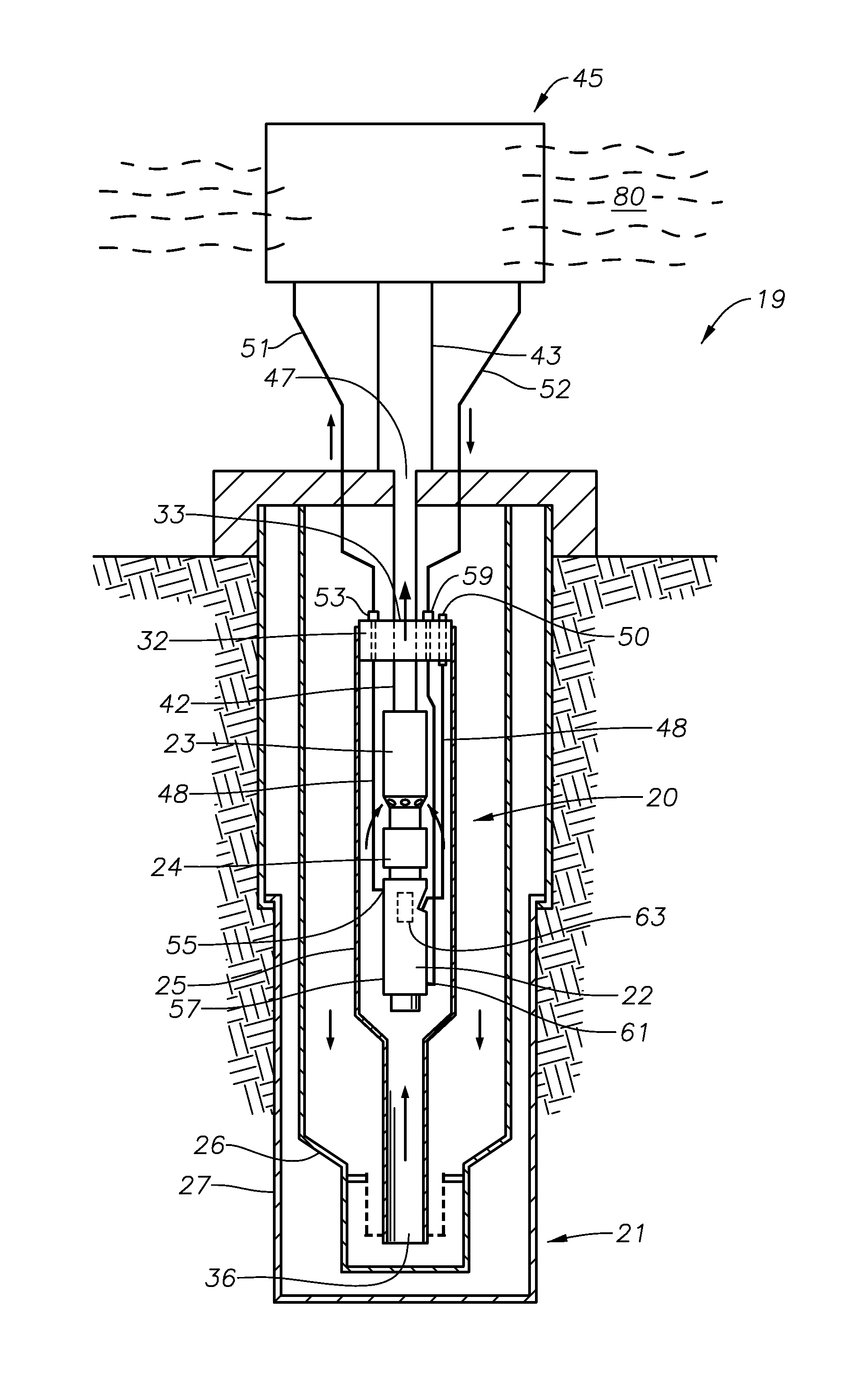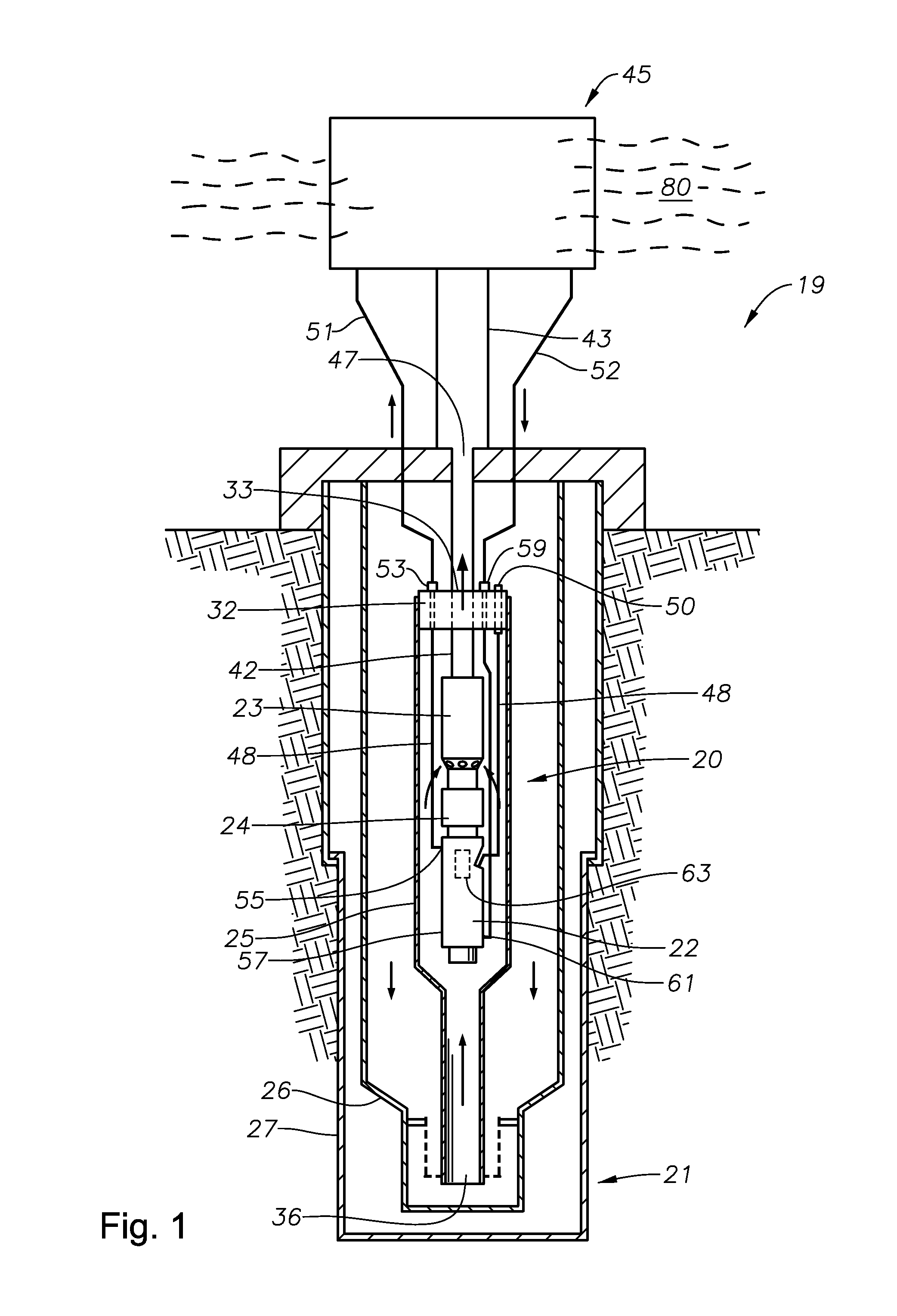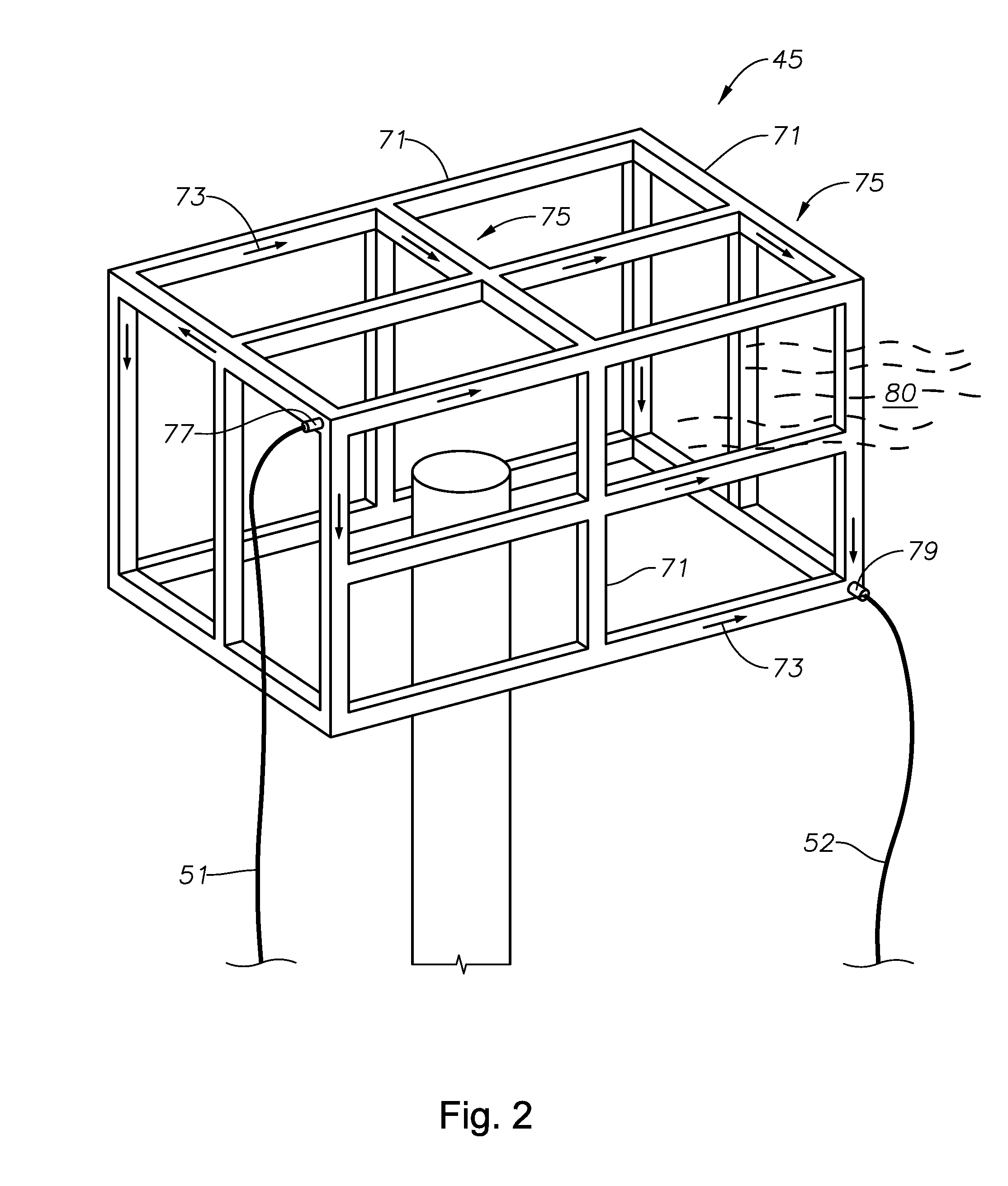Systems and methods of using subsea frames as a heat exchanger in subsea boosting systems
a technology of subsea frames and subsea boosting, which is applied in the direction of pump components, non-positive displacement fluid engines, lighting and heating apparatuses, etc. it can solve the problems of increasing the temperature of the oil in the motor of the esp, limiting the heat exchanger to the surrounding well fluid, and reducing the temperature of the dielectric lubricant. , to achieve the effect of reducing the temperature of the dielectric lubricant, reducing the cost of the a subsea frame heat exchanger and subsea frame heat exchanger and subsea frame heat exchanger and subsea subsea frame heat exchanger and subsea subsea subsea subsea subsea subsea subsea subsea subsea subsea subsea subsea subsea subsea subsea subsea subsea technology, applied subsea heat exchanger and subsea hea
- Summary
- Abstract
- Description
- Claims
- Application Information
AI Technical Summary
Benefits of technology
Problems solved by technology
Method used
Image
Examples
Embodiment Construction
[0029]The present invention will now be described more fully hereinafter with reference to the accompanying drawings, which illustrate embodiments of the invention. This invention may, however, be embodied in many different forms and should not be construed as limited to the illustrated embodiments set forth herein. Rather, these embodiments are provided so that this disclosure will be thorough and complete, and will fully convey the scope of the invention to those skilled in the art. Like numbers refer to like elements throughout. Prime notation, if used, indicates similar elements in alternative embodiments.
[0030]Electrical submersible pumps (ESPs) have been used for subsea boosting on the seabed. The ESPs are typically deployed / employed by placing the ESP inside a caisson generally located substantially below the mud line of the seafloor, or by placing the ESP inside a capsule located on a mounting skid having a frame structure. The housing of the ESP motor is generally full of a...
PUM
 Login to View More
Login to View More Abstract
Description
Claims
Application Information
 Login to View More
Login to View More - R&D
- Intellectual Property
- Life Sciences
- Materials
- Tech Scout
- Unparalleled Data Quality
- Higher Quality Content
- 60% Fewer Hallucinations
Browse by: Latest US Patents, China's latest patents, Technical Efficacy Thesaurus, Application Domain, Technology Topic, Popular Technical Reports.
© 2025 PatSnap. All rights reserved.Legal|Privacy policy|Modern Slavery Act Transparency Statement|Sitemap|About US| Contact US: help@patsnap.com



